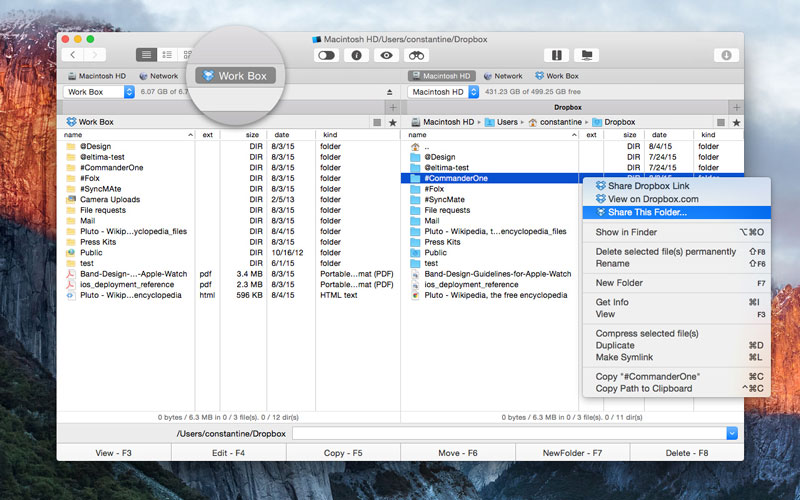Access Database Manager For Mac Os X
If you can't access the administration page
- Access Database Manager For Mac Os X 10
- Access Database Manager For Mac Os X 10 11
- Best Mac Os X Software
- Access Database Manager For Mac Os X Download
I have Access 2013. The person I want to be able to use a database is working on a Mac. I know there is an Access Database Manager for Mac out there somewhere. Does anyone know what level the. Microsoft Access by Microsoft Corporation is a database management application that works with the MDB file format. Unfortunately, there is no version of Microsoft Access for Mac released yet, which means that other applications with similar functionality need to be used. Mar 22, 2016 If you're looking for a native Mac application with a great user interface, then I recommend FileMaker Pro. It's also available in a Windows version. If you're a database pro and you understand SQL, then there are lots of options mentioned by othe. Alternatives to Microsoft Access on the Mac File Maker Pro. FileMaker is probably the best known database application for the Mac. It has a feature set comparable to Microsoft Access, but with a strong focus on forms (layouts) as the primary way of accessing databases.
Profile Manager's basic setup is in Server app. You must use Safari to access Profile Manager's /mydevices webpage and the administration webpage.
Only server administrators can access your administration page. The URL format for your administration page is:
- https://your_server's_fully_qualified_domain_name/profilemanager
Example: https://www.example.com/profilemanager
To enroll an iPhone, iPad, iPod touch, or a Mac, go to:
Access Database Manager For Mac Os X 10
- https://your_server's_fully_qualified_domain_name/mydevices
Example: https://www.example.com/mydevices
If you can't access the administration page with a web browser other than Safari, try with Safari. If you can't access it with Safari, try the following troubleshooting steps.

Check your DNS server
DNS settings are important when you're managing a Profile Manager deployment. If Profile Manager doesn't open, make sure your server points to a reliable DNS server.
If you can't push profiles or apps to clients
If you experience issues when you push profiles or apps to client systems, check the system log file in Console. If it reports that your server can't reach Apple's APNs servers, check your network's configuration. Make sure that all needed ports are open.
For more information, turn on APNS debug logging with these Terminal commands:
You can find the log file at /Library/Logs/apsd.log.
After your APNS transactions are logged, use these Terminal commands to turn off debug logging:
If you get other issues with Profile Manager
Profile Manager logs can help you fix issues with Profile Manager. You can find a symbolic link named 'devicemgr' at /var/log. Facebook for mac os x 10.6.8 6 8 download. This file points to /Library/Logs/ProfileManager, where you can find these logs:
| devicemgrd.log |
|
| dm_helper.log |
|
| dmrunnerd.log |
|
| migration_tool.log |
|
php.log |
|
php-fpm.log |
|
php-fpm.devicemgr.log |
|
| PostgreSQL-<yyyy-mm-dd>.log |
|
| profilemanager.log |
|
| servermgr_devicemgr.log |
|
These logs can also provide helpful information:
- /var/log/apache2/service_proxy_error.log
- /var/log/system.log
In macOS Sierra and later, some information is stored via Unified logging. The following terminal command can provide you with some additional helpful information:
About transaction 'failures'
Some of these logs might list transaction 'failures' or retries. Most of these entries are expected and don't indicate an issue. These logged events are conflicts between attempts to modify the underlying PostgreSQL database at the same time. These kinds of failures retry until they succeed.
You can identify transaction conflicts when you see any of these notes in your log files:
- Canceled on conflict out to pivot
- could not serialize access due to concurrent update
- @@@ Retry #X
- @@@ Retry X
Access Database Manager For Mac Os X 10 11
Use verbose logging to find more info
More information on how to fix an issue is sometimes available if you increase the log level. To gather the information you need, reproduce the issue after you increase the logging level.
When you're finished, revert to the original logging level. If you leave the logging level at a higher setting, it decreases the available space on your startup drive.
Turn on verbose logging
To increase the level of logging, use this Terminal command:
This automatically restarts Profile Manager Service.
Turn off verbose logging
Best Mac Os X Software
To revert the logging level back to its original setting, use this Terminal command:
Access Database Manager For Mac Os X Download
This automatically restarts Profile Manager Service.
Learn more
- See the ports used by Profile Manager.
- Get Profile Manager Help
- Learn what to do if you can't use the Apple Push Notification service